| Location | Kathmandu Valley, Bagmati Province |
| Area | 49.45 km2 (19.09 sq mi) |
| Elevation | 1,400 m (4,600 ft) |
| Population | 856,767 |
| Found By | Manjushri |
Kathmandu City
Kathmandu is the capital of Nepal. It is located in Kathmandu Valley, Bagmati Province of Nepal and covers an area of 49.45 km2 (19.09 sq mi). Kathmandu City, largest city of Nepal, is a vibrant hub that blends ancient history with modern life. Nestled in the Kathmandu Valley, it is surrounded by green hills and overlooked by the majestic Himalayas, making it a picturesque and culturally rich city. Kathmandu has long been a center for culture, religion, and trade in the region, with a history dating back more than 2,000 years.
Kathmandu City is often referred to as the “City of Temples” due to the multitude of historical and religious sites scattered throughout the city. Durbar Square, a UNESCO World Heritage site, is the heart of the city and home to palaces, courtyards, and temples that date back to the Malla dynasty. The Pashupatinath Temple, a revered Hindu temple dedicated to Lord Shiva, and the Swayambhunath Stupa (commonly known as the Monkey Temple), a sacred Buddhist pilgrimage site, further highlight the city’s religious diversity and importance.
Kathmandu City is a melting pot of cultures, where Hinduism and Buddhism coexist harmoniously. Festivals such Dashain, Tihar, and Indra Jatra bring the city to life with colorful processions, music, and rituals that attract both locals and tourists alike. Kathmandu is set in the Kathmandu Valley, encircled by lush green hills that provide a stunning backdrop to the city’s skyline. On clear days, the distant Himalayan mountain range can be seen, creating a dramatic contrast between the bustling city life and the serene natural environment. Peaks such as Ganesh Himal, Langtang, and Gaurishankar offer awe-inspiring views, especially during sunrise and sunset, when the mountains glow in shades of orange and pink.
The Bagmati River, which runs through the Kathmandu city, adds a natural charm, especially around sacred spots like Pashupatinath Temple, where the river is revered as holy. The riverbanks and surrounding greenery offer peaceful areas for contemplation, with views of the hills rising behind the temples and the flowing waters below.
- Kathmandu City
- Tourism and Modern Kathmandu City
- 15 Must Visit Place in Kathmandu City
- 1. Pashupatinath temple
- 2. Swyambhunath Mahachaitya
- 3. Kathmandu Durbar Square/ Hanuman Dhoka Durbar
- 4. Sundarijal
- 5. Chandragiri Hills
- 6. Shivapuri National park
- 7. Godawari Botanical Garden of Kathmandu City
- 8. Dharahara of Kathmandu City
- 9. Rani Pokhari
- 10. Narayanhiti Durbar/ Royal palace
- 11. Budhanilkantha Temple
- 12. Dakshinkaali Temple
- 13. Buddha Stupa/ Boudha
- 14. Thamel
- 15. Garden of Dreams
- Conclusion
- Kathmandu City FAQs
Tourism and Modern Kathmandu City
In recent decades, Kathmandu City has also emerged as a gateway for trekkers and adventurers heading into the Himalayas, including the famed Mount Everest. Thamel, the city’s tourist district, is known for its lively atmosphere, with a mix of hotels, restaurants, shops, and tour agencies catering to trekkers and backpackers.
While Kathmandu retains its rich cultural heritage, it has also embraced modernization. The city has grown rapidly, with new infrastructure, shopping malls, and international restaurants popping up alongside ancient temples and narrow, winding streets. However, this rapid development has also brought challenges, such as air pollution and traffic congestion.
Earthquake of 2015
In April 2015, Kathmandu City was severely affected by a major earthquake, which caused significant damage to many historical structures, including parts of Durbar Square. However, the city has shown resilience, with restoration efforts ongoing to rebuild its heritage sites.
15 Must Visit Place in Kathmandu City
Kathmandu City is a basket of natural beauties. It has unlimited must exploring sites. Here are some must visit places of Kathmandu City:
1. Pashupatinath temple
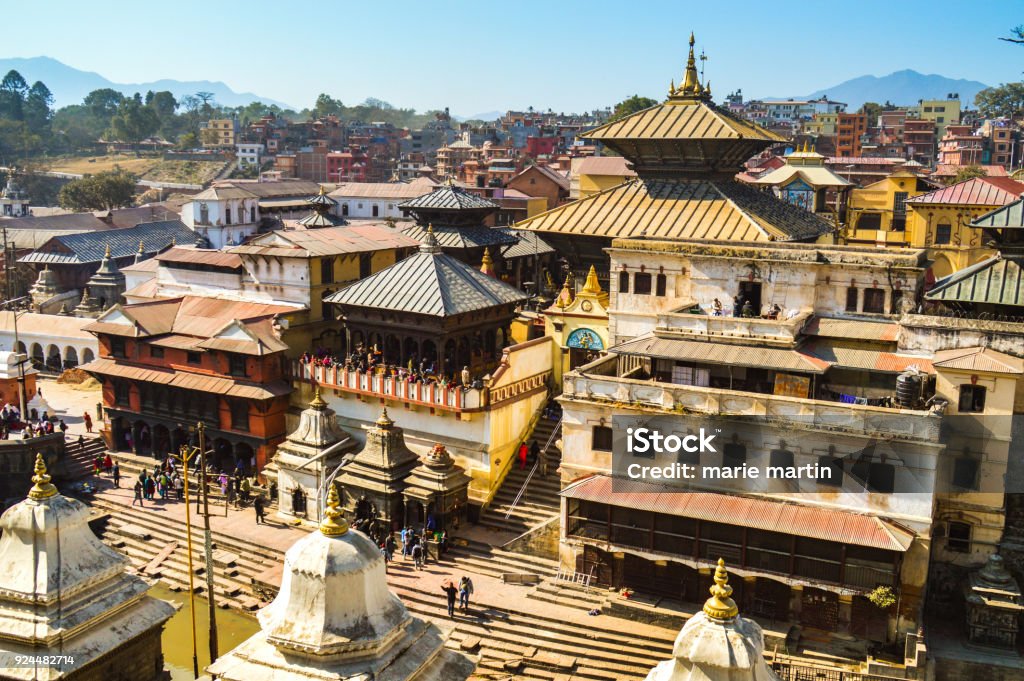
The Pashupatinath Temple is one of the holiest and most significant Hindu temples dedicated to Lord Shiva. Located on the banks of the Bagmati River in Kathmandu City, Nepal, this ancient temple is a UNESCO World Heritage Site and holds immense religious and cultural importance.
The origins of Pashupatinath date back to 400 AD, although some believe the temple’s existence stretches even further into antiquity, with mythological references linking it to the prehistoric period. Over centuries, the temple has grown in stature and prominence, attracting millions of devotees from Nepal, India, and other parts of the world. It is revered as the seat of Pashupati, a manifestation of Lord Shiva as the “Lord of the Animals” or “Protector of All Living Beings.”
Pashupatinath Temple is an outstanding example of traditional Nepalese pagoda architecture. The temple complex comprises a main temple with a two-tiered roof made of copper and gold. The temple’s main entrance features intricate wood carvings and ornate silver-plated doors. The sanctum houses a four-faced lingam (Shiva lingam), with each face representing different aspects of Lord Shiva: creation, protection, destruction, and blessing. Only Hindus are allowed inside the temple’s inner sanctum.
The atmosphere around Pashupatinath is deeply spiritual, with the constant chanting of mantras, the ringing of bells, and the sound of prayers filling the air. The temple complex is surrounded by a network of smaller shrines and ghats (stone steps along the river), which adds to the serenity and sacredness of the site.
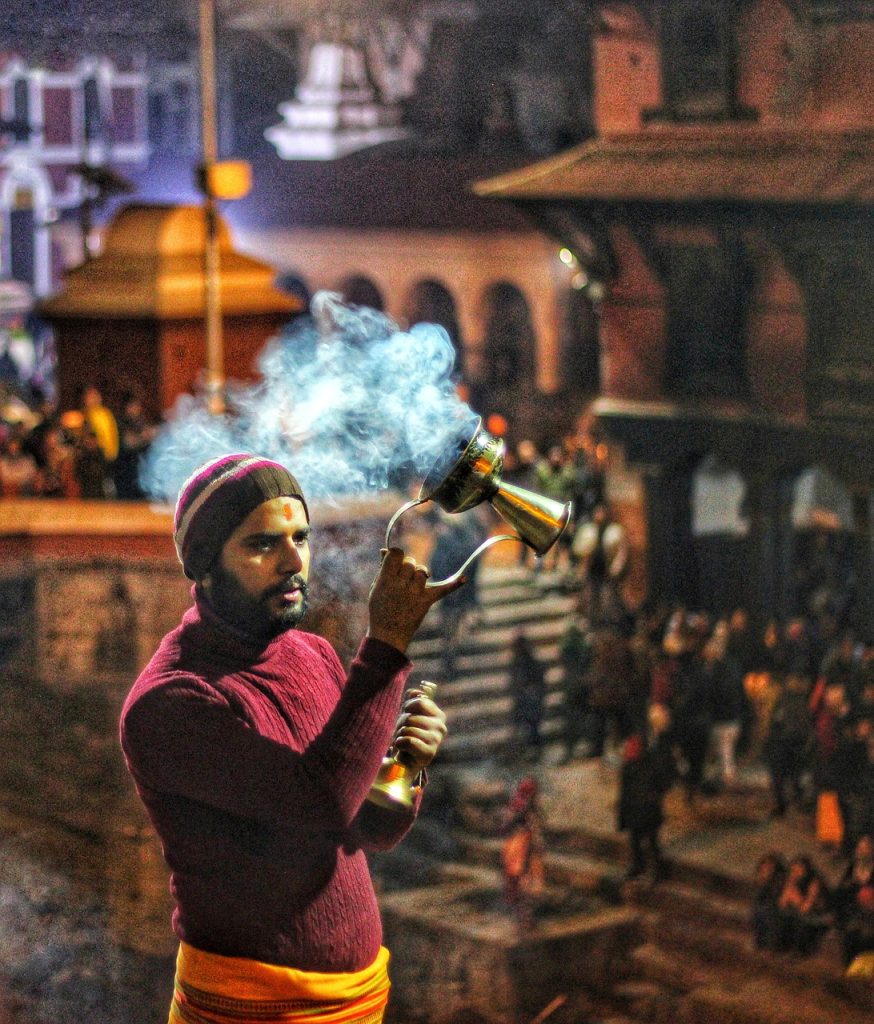
There are several myths surrounding the origin of the temple. One popular legend tells of Lord Shiva transforming into a deer and wandering through the forests of Kathmandu City to escape his divine responsibilities. When the gods eventually found him, they pleaded for his return, and Shiva agreed. It is said that during this event, Shiva blessed the place where the temple now stands.
Pashupatinath Temple remains a pivotal site for the followers of Lord Shiva and a symbol of Nepal’s deep-rooted religious and cultural traditions. With its ancient history, spiritual ambiance, and architectural beauty, the temple continues to inspire awe and devotion among millions of pilgrims and visitors each year.
It plays a significant role in the Maha Shivaratri festival, when thousands of devotees from inside and outside of kathmandu city gather to offer prayers and participate in elaborate rituals. During this time, the temple becomes a hub for both religious devotion and cultural celebration. Another key ritual that takes place at Pashupatinath is the cremation ceremonies on the banks of the Bagmati River, which is believed to lead the soul to moksha (liberation).
To know more about Pashupatinath Temple please go to: Pashupatinath Temple
2. Swyambhunath Mahachaitya
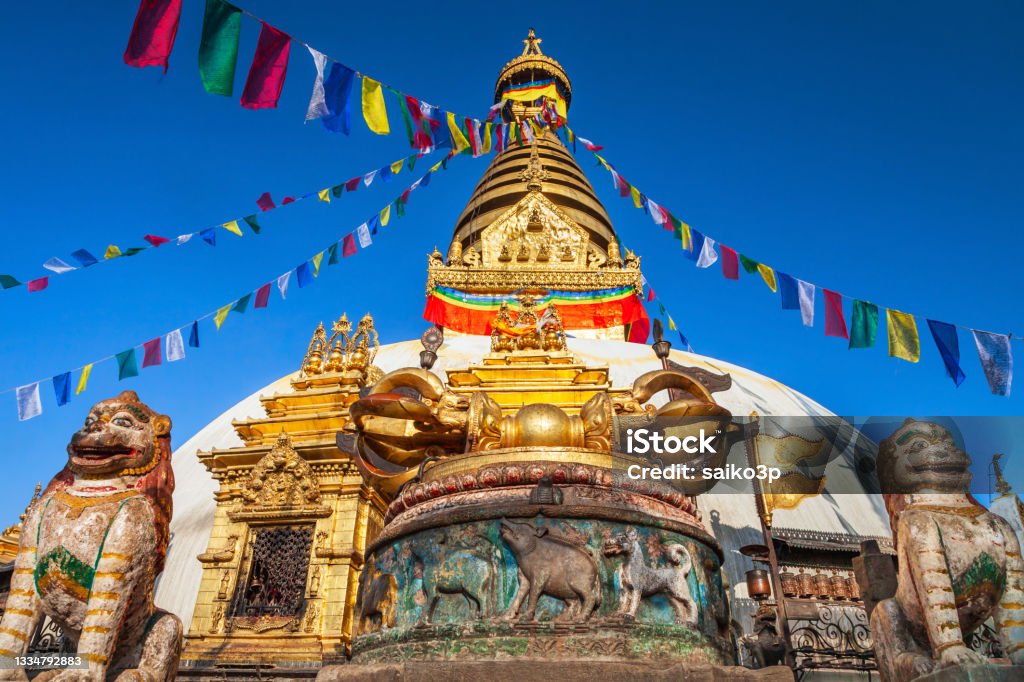
Swayambhu, one of the most iconic and sacred sites in Kathmandu City, Nepal, sits atop a hill in the Kathmandu City. Renowned for its historical and cultural significance, this ancient religious complex has earned recognition as a UNESCO World Heritage Site. Importantly, it holds a special place in both Hinduism and Buddhism.
The complex features a central stupa, along with various shrines, temples, and prayer wheels, which attract pilgrims from both religions. The gilded spire of the central stupa, adorned with the all-seeing eyes of the Buddha, stands as a recognizable symbol of Kathmandu City, Nepal.
Furthermore, the site offers breathtaking panoramic views of the Kathmandu City and the surrounding Himalayan mountains. As a result, Swayambhu serves not only as a religious center but also as a popular tourist destination. Its resident monkey population, which has earned it the nickname “Monkey Temple,” adds to its charm.
Visitors can explore Swayambhu’s rich history, experience the spiritual atmosphere, and enjoy the serene surroundings, while gaining insights into Nepal’s cultural and religious diversity. The site remains a place of worship, meditation, and reflection for both locals and tourists alike. According to history, Swayambhu Purana reveals that Swayambhunath emerged from a lotus flower. Major festivals, such as Buddha Jayanti (celebrated in April or May) and the month-long Gunla celebration (in August or September), are observed here.
Resting on a hillock 3 km west of Kathmandu City, Swayambhu overlooks most parts of the valley, offering visitors a panoramic view of the city. Since the 1970s, visitors who struggled to pronounce its name began calling it the “Monkey Temple.” The stupa has stood for centuries as a symbol of faith and harmony, incorporating Hindu temples and deities within its Buddhist site.
Legend states that the glory of Kathmandu City originated from this very point. More than 2,000 years ago, the valley was created from a primordial lake, and the stupa evolved spontaneously at this site. To this day, Swayambhu remains the oldest stupa of its kind in Nepal, with numerous shrines and monasteries enhancing its sacred grounds.
3. Kathmandu Durbar Square/ Hanuman Dhoka Durbar
Kathmandu Durbar Square is a major tourist attraction, offering visitors a glimpse into the history, architecture, and vibrant cultural life of Kathmandu City. The area is surrounded by local markets, shops, and restaurants, adding to its lively atmosphere. Visitors can explore the museums within the palace complex, which house royal artifacts, ancient manuscripts, and historical photographs.
Kathmandu Durbar Square, also known as Hanuman Dhoka Durbar Square, is one of the most iconic cultural and historical landmarks in Nepal. Located in the heart of Kathmandu City, this UNESCO World Heritage Site represents the rich cultural heritage of the Kathmandu City and is one of the three Durbar Squares in the valley, alongside Patan Durbar Square and Bhaktapur Durbar Square.
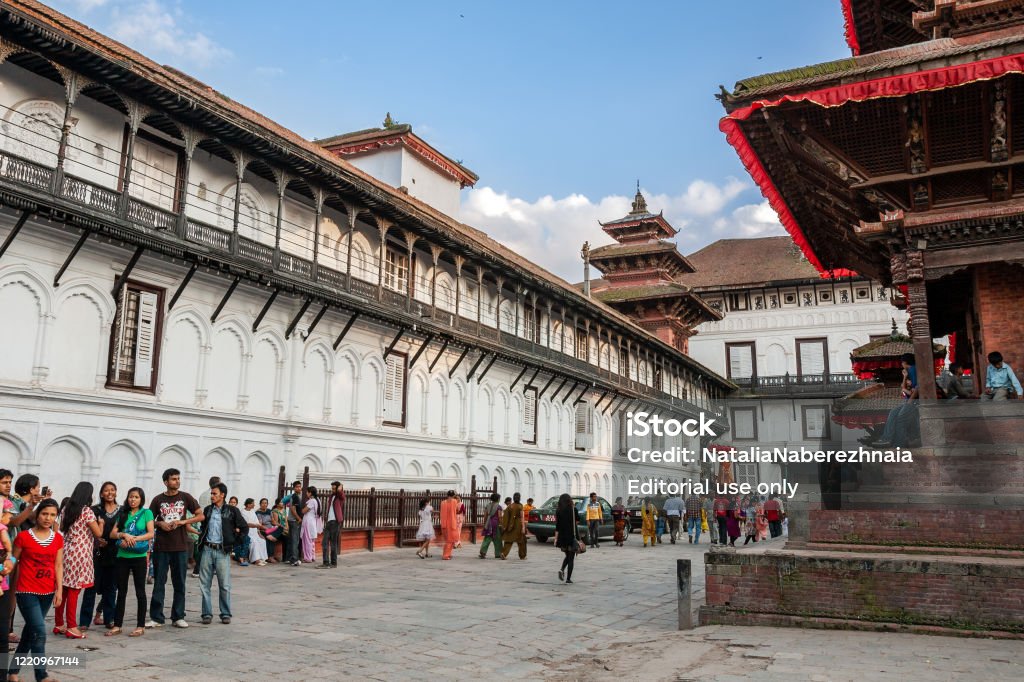
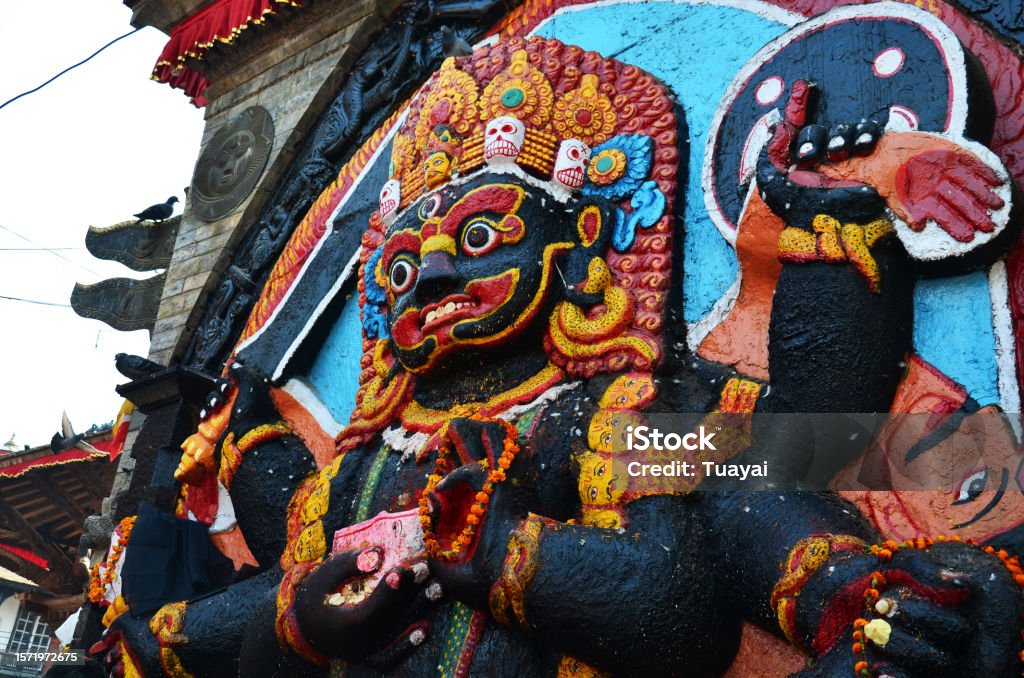

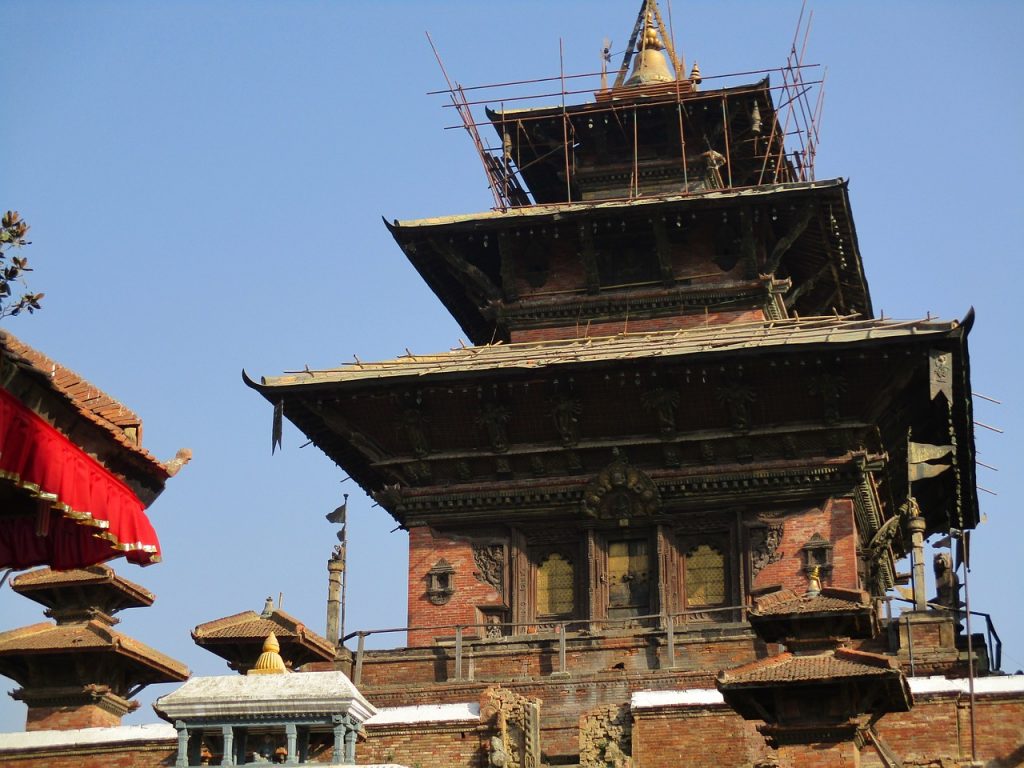
It served as the royal palace for Malla kings from the 12th to the 18th centuries and later as the residence of the Shah kings of Nepal. The square is a vibrant testimony to the craftsmanship of Newar artists and architects, with its intricate wooden carvings, stone sculptures, and beautiful courtyards. is a major center of religious and cultural activities.
Numerous festivals are celebrated here throughout the year, such as Indra Jatra and Dashain, during which the area comes alive with music, dance, and rituals. The square also serves as a social hub, where locals gather for meetings, leisure, and cultural activities.The square is home to a number of ancient temples, shrines, and palaces, reflecting the syncretism of Hindu and Buddhist traditions. Some notable structures include:
Hanuman Dhoka Palace: The former royal palace, named after the Hindu god Hanuman, whose statue stands at the entrance. This palace complex was the seat of power for Nepalese kings for centuries.
Taleju Temple: A towering three-tiered temple dedicated to the goddess Taleju Bhawani, built in the 16th century by King Mahendra Malla. The temple is open to the public only once a year during the Dashain festival.
Kumari Ghar (House of the Living Goddess): This is the residence of the Kumari, a young girl worshipped as the living embodiment of the goddess Taleju. The building is adorned with beautiful wood carvings, and during certain festivals, the Kumari makes an appearance at the window to bless the devotees.
Jagannath Temple: Known for its erotic carvings on the roof struts, this temple stands as one of the most interesting examples of Newari artistry.
Kasthamandap: The structure that gave Kathmandu City its name, Kasthamandap is believed to have been built from the wood of a single tree. Although partially damaged in the 2015 earthquake, its significance as a spiritual and architectural landmark remains.
Mahakaal: Ancient Murti of Bhagwan Kaal Bhairav located in Kathmandu Durbar Square, Nepal. According to legend, the Murti was found at a paddy field and later it was placed at the Durbar Square by King Pratap Malla. Kaal Bhairav is believed to have been sculptured from a single stone.
4. Sundarijal
Sundarijal is a beautiful and serene location situated about 15 kilometers northeast of the Kathmandu City, Nepal. Known for its lush forests, scenic waterfalls, and vibrant natural beauty, Sundarijal serves as a gateway to the Shivapuri National Park and is a popular destination for nature lovers, hikers, and adventure seekers. The park covers 159 square kilometers and is a vital conservation area for Kathmandu’s water supply.
In addition to its rich biodiversity, Shivapuri National Park offers stunning views of the surrounding hills and, on clear days, glimpses of the distant Himalayan peaks. As Sundarijal lies within the Shivapuri Nagarjun National Park, visitors can enjoy the natural beauty of the protected forest area.

Sundarijal, meaning “beautiful water” in Nepali, lives up to its name with its picturesque landscapes dominated by pristine rivers, streams, and waterfalls. The Sundarijal Waterfall, in particular, is a major attraction, offering visitors a refreshing retreat from the heat and crowds of the Kathmandu City. The Bagmati River, which flows through Sundarijal, adds to the area’s scenic charm.
Sundarijal is also well-known as the starting point of several trekking routes in the Kathmandu City and the Valley, most notably the Helambu Trek and the Langtang-Gosaikunda Trek. Trekkers often begin their journey from Sundarijal, walking through dense forests of oak, pine, and rhododendron trees within Shivapuri National Park. The park is home to a diverse range of wildlife, including deer, leopards, and various species of birds, making it an ideal spot for birdwatching and nature photography.
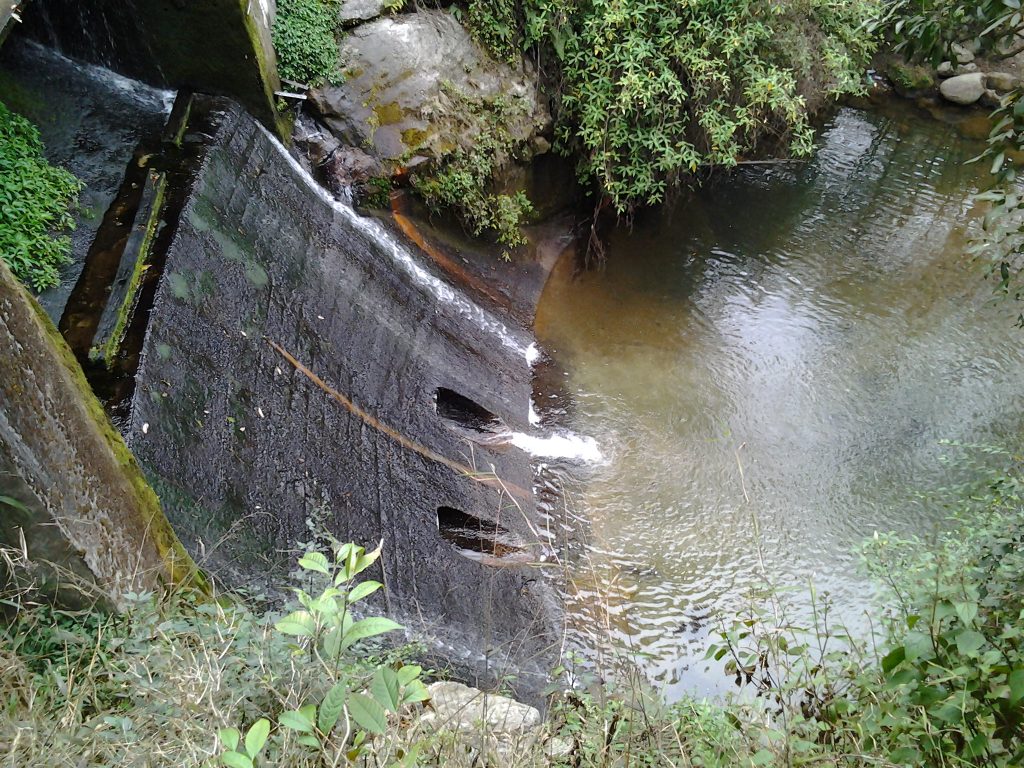
Sundarijal is also notable for its role in Nepal’s hydroelectric power generation. The Sundarijal Hydropower Station, established in 1934, is one of the oldest hydropower plants in Nepal and remains an important source of electricity for the Kathmandu City. The plant uses water from the Sundarijal River to generate power and also helps in irrigation and drinking water supply for the city.
For those looking for more adventure, Sundarijal offers activities such as camping, picnicking, and cycling. The fresh air, scenic views, and tranquil environment make it a perfect spot for a weekend getaway. Families and groups often visit Sundarijal to enjoy a day out amidst nature, with the sound of waterfalls and chirping birds enhancing the peaceful atmosphere.
5. Chandragiri Hills
Chandragiri Cable Car, a gondola lift transportation system, operates in Chandragiri Municipality,Kathmandu City. Opening its doors to the public in 2016, the cable car transports passengers from Thankot to Chandragiri Hills. Spanning 2.4 km (9,095 ft), the line features two stations. From the hilltop, visitors can enjoy panoramic views of the Kathmandu City Valley and the Himalayan ranges, stretching from Annapurna to Everest.
Moreover, the cable car provides easy access to the Bhaleshwor Mahadev Temple, which stands atop Chandragiri Hill. This site holds historical significance as it is where Prithvi Narayan Shah decided to annex the beautiful Nepal Valley into his Gorkha Kingdom. Visitors experience the thrill of witnessing the stunning Kathmandu City, its landscapes, and the surrounding mountains while riding the cable car.

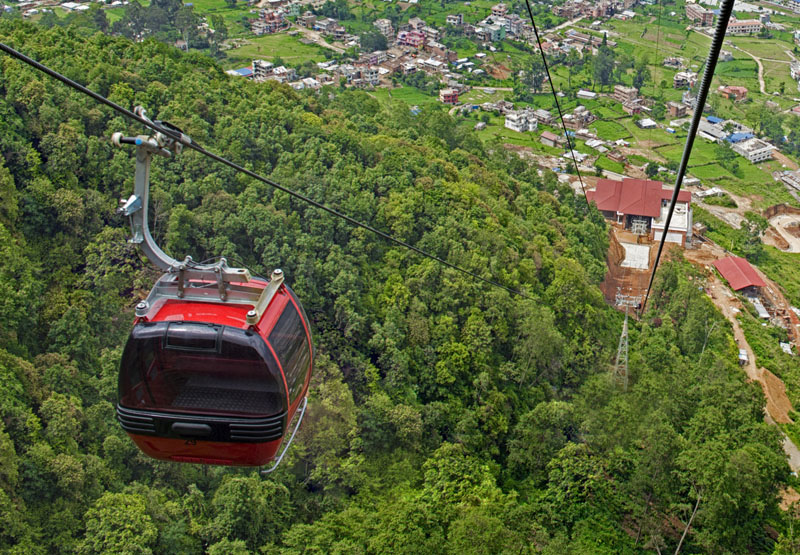
Chandragiri Hills, recognized as one of Kathmandu City most beloved day-trip destinations, also serves as a popular hiking spot. Walking around the hills allows tourists to breathe in the fresh air and admire the natural beauty of the countryside. At the mountain top, the main attraction of Chandragiri Hill offers breathtaking views of the Himalayan mountain ranges. From the top, visitors can observe the green valley of Kathmandu City below, with growing urbanization sprawling across the landscape.
Additionally, Chandragiri Hill offers an ideal combination of natural beauty and cultural significance, making it a major tourist attraction. The best time to visit is during spring and fall, although winter sometimes brings snowfall to the area. Enhancing the cultural diversity of the hill, the Bhaleshwor Mahadev Temple stands as a pristine shrine. Featuring typical Nepalese pagoda-style architecture, the temple boasts wooden grid windows and wall carvings of gods and goddesses. Outside the temple, a statue of King Prithvi Narayan Shah stands tall against the backdrop of white mountain peaks.
This hilltop site carries immense historical importance, as King Prithvi Narayan Shah is said to have prayed and meditated here before unifying Nepal and conquering the Kathmandu City Valley. It is believed that he received blessings from Bhaleshwor Mahadev for his devotion. After the unification, Chandragiri Hill became one of the four key trade passes for the country and the Kathmandu City.
The cable car system itself includes 38 gondolas, capable of transporting 1,000 people per hour. The 2.4 km cable car ride takes approximately 9 minutes to reach the top station of Chandragiri Hills, with each cabin accommodating up to 8 passengers. A child taller than 3 feet requires a ticket for the ride, making the journey a fun and accessible experience for families and visitors of all ages.
6. Shivapuri National park
Shivapuri National Park, located on the northern edge of the Kathmandu City, is one of Nepal’s most important conservation areas and a favorite destination for nature lovers, trekkers, and spiritual seekers. Covering an area of 159 square kilometers, the park was officially established in 2002, making it one of the youngest national parks in Nepal. It is named after Shivapuri Peak, which rises to an elevation of 2,732 meters, making it the highest point in the Kathmandu City. It plays a crucial role in preserving the natural environment of the Kathmandu City.
Shivapuri National Park is renowned for its lush forests, diverse wildlife, and stunning landscapes. The park’s forests are a mixture of oak, pine, rhododendron, and bamboo, creating a rich ecosystem that supports a variety of plant and animal species. During spring, the rhododendron blooms add vibrant colors to the hillsides, making the park even more picturesque.
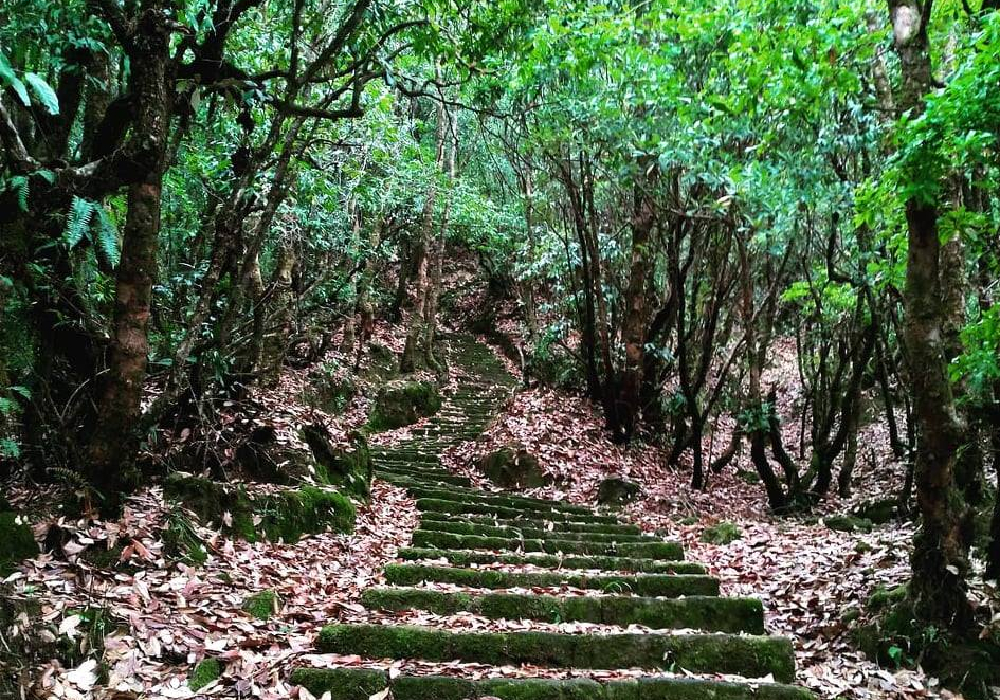

The park is home to a wide range of wildlife, including endangered species like the clouded leopard, Himalayan black bear, and leopard cat. Visitors may also encounter deer, wild boar, monkeys, and various types of butterflies. Birdwatchers are especially drawn to Shivapuri, as it hosts over 300 species of birds, including the spiny babbler, which is endemic to Nepal.
Shivapuri National Park offers several trekking and hiking routes, which attract both locals and tourists looking for short treks close to Kathmandu City. The trails wind through dense forests, across streams, and up hills, providing panoramic views of the Kathmandu Valley and, on clear days, the majestic Himalayan range to the north.
The park contains several streams and rivers, including the Bagmati and Bishnumati rivers, which originate within its boundaries. These water sources are vital for both drinking water and irrigation in the Kathmandu City and the valley. Several monasteries, shrines, and retreat centers are located within and around the park.
7. Godawari Botanical Garden of Kathmandu City
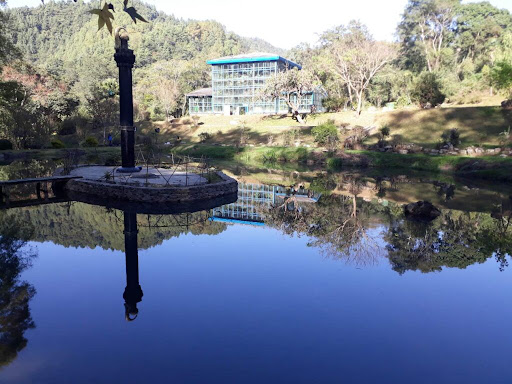
The Godawari Botanical Garden, located at the base of the Phulchowki Hill, about 14 kilometers southeast of Kathmandu City , is one of Nepal’s most popular natural retreats. Spread over a vast area, the garden is known for its diverse collection of plant species, lush greenery, and serene environment, making it an ideal destination for nature lovers, botanists, and those seeking a peaceful escape from the city. Established in 1962, the garden is managed by the Department of Plant Resources under the Ministry of Forests and Environment, and it serves as both a recreational space and a research center for botanical studies.
It has wide variety of plant species, including both native and exotic flora. The garden is home to a range of plants, such as orchids, ferns, medicinal herbs, and flowering shrubs, which thrive in the cool, moist climate of the area. The garden also contains several greenhouses where rare and delicate plants are cultivated and preserved. It is a hub for educational and scientific activities. It serves as a living laboratory for students, researchers, and conservationists studying botany, ecology, and environmental science.
It is also a popular destination for locals and tourists looking for a peaceful retreat. Its well-maintained lawns, walking paths, and tranquil ponds provide a perfect setting for relaxation, picnics, and leisurely walks. Families often visit the garden on weekends for picnicking, while others explore its various themed sections, including the rock garden and the tropical plant house.
8. Dharahara of Kathmandu City
Dharahara, also known as the Bhimsen Tower, is a historic and iconic monument located in the heart of Kathmandu City, Nepal. Originally built in 1832 during the reign of Prime Minister Bhimsen Thapa, the tower was a symbol of strength, resilience, and architectural grandeur. Standing at a height of approximately 61.88 meters (203 feet), it was a prominent feature of the Kathmandu skyline and served as a watchtower during the Shah Dynasty.

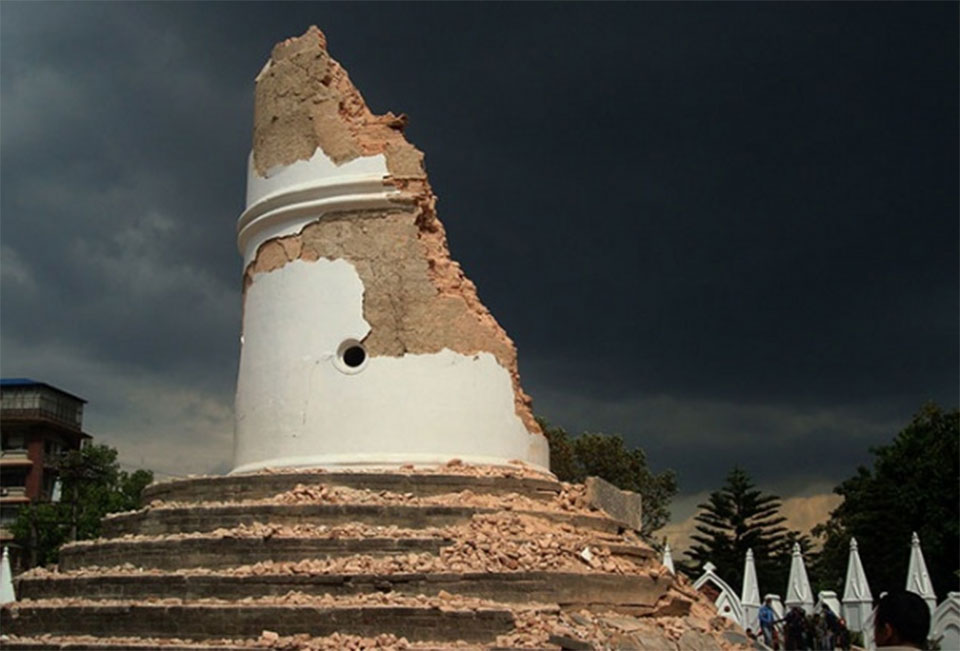

The structure, inspired by Mughal architecture, featured a spiral staircase of 213 steps leading to a balcony at the top, from where visitors could enjoy panoramic views of the Kathmandu Valley and the surrounding Himalayan ranges. is a blend of history, tragedy, and rebirth, symbolizing Kathmandu’s ability to honor its past while moving forward into the future. The collapse of Dharahara in 2015 was a reminder of the fragility of life and the importance of preserving Nepal’s rich heritage.
Dharahara has been rebuilt to its original structure and reopened after nine years. Visitors can once again climb to the top or take an elevator to enjoy the spectacular views of Kathmandu, continuing the tradition of the tower as a vantage point over the Kathmandu City.
Dharahara has witnessed several devastations caused by earthquakes over the years. The tower was partially destroyed during the 1934 earthquake and later rebuilt, retaining much of its original structure and design. However, the 2015 Gorkha earthquake was particularly devastating, causing the complete collapse of Dharahara and leading to the tragic loss of life, as it was a popular tourist site at the time.
9. Rani Pokhari
Rani Pokhari, also known as the Queen’s Pond, is a historic and culturally significant artificial pond located in the heart of Kathmandu, Nepal. Built in 1670 by King Pratap Malla, Rani Pokhari is one of the city’s iconic landmarks, symbolizing love, grief, and devotion. The pond was constructed in memory of King Pratap Malla’s beloved queen, who was devastated by the loss of their young son. To console her and to help her overcome her sorrow, the king commissioned the pond, naming it Rani Pokhari, which translates to “Queen’s Pond.” For the residents of Kathmandu, Rani Pokhari remains a symbol of love, loss, and the enduring cultural heritage of the kathmandu city.

Rani Pokhari spans approximately 7.5 acres and is surrounded by a stone wall with four gates that represent the major cities of the Kathmandu Valley: Kathmandu, Bhaktapur, Patan, and Kirtipur. In the center of the pond lies a beautiful white shikhara-style temple, which is dedicated to Shiva in the form of Matashiva. This temple, known as the Bal Gopaleshwar Temple, sits on an island accessible via a bridge. The temple was originally built in the Mughal style, and over the centuries, it has been a place of worship for devotees, especially on the day of Bhai Tika, the last day of the Tihar festival.
Rani Pokhari reflects the architectural and cultural influence of the Malla period, a time when Kathmandu City was flourishing in terms of art, culture, and construction. The pond, once inaccessible for many years due to damage and ongoing restoration, is now open to the public during special occasions, especially during Bhai Tika. The pond’s beauty, coupled with the historical significance of the temple, continues to attract locals and tourists alike. In the evenings, the reflections of the temple and surrounding structures on the calm waters of the pond create a tranquil atmosphere.
10. Narayanhiti Durbar/ Royal palace

Narayanhiti Royal Palace, located in the heart of Kathmandu City stands as an iconic symbol of Nepal’s monarchy and history. The palace, now a museum, once served as the primary royal residence for the Kings of Nepal. Built in the 1960s, it was commissioned by King Mahendra to replace the older palace that had been destroyed during an earthquake. The design of the palace reflects a blend of traditional Nepali architecture with modern influences, symbolizing the power and grandeur of the monarchy.
The name “Narayanhiti” combines two words: Narayana, referring to the Hindu god Vishnu, and Hiti, which means a water spout in the Newari language. This name reflects the palace’s proximity to a water spout dedicated to Vishnu that lies near the entrance.
Situated in the bustling district of Durbar Marg, Narayanhiti covers a vast area and is surrounded by lush gardens. The palace has witnessed significant moments in Nepal’s history, including royal ceremonies, diplomatic events, and tragic incidents, the most infamous being the Nepalese Royal Massacre of 2001. During this event, Crown Prince Dipendra allegedly killed several members of the royal family, including King Birendra and Queen Aishwarya, before succumbing to his own injuries. This tragic event shook the nation and eventually contributed to the monarchy’s downfall.
Following the end of Nepal’s monarchy in 2008 and the establishment of the country as a republic, Narayanhiti Palace was transformed into a museum in 2009. The museum now allows visitors to explore the opulent rooms of the palace, including the Throne Room, the State Banquet Hall, and the private chambers of the royal family. The museum also displays royal artifacts, furniture, gifts from foreign dignitaries, and relics of the country’s rich history.
One of the key highlights of the museum is the Golden Throne, where the kings of Nepal once sat during royal functions. The palace also provides insight into Nepal’s political changes, showcasing the transition from a monarchy to a democratic republic.
Narayanhiti Palace remains a popular tourist destination in Kathmandu, offering visitors a glimpse into the life of Nepal’s royal family and the country’s cultural heritage.
11. Budhanilkantha Temple

Budhanilkantha Temple, located about 10 kilometers north of Kathmandu City, is one of the most important and revered Hindu temples in Nepal. The origins of the Budhanilkantha statue are shrouded in mystery. According to local legend, the statue was discovered buried underground by a farmer while tilling his land. It is dedicated to Lord Vishnu, and its centerpiece is the striking stone statue of Sleeping Vishnu (also called Jal Narayan), one of the largest and most iconic Vishnu statues in the country. The temple is a popular pilgrimage site for both Hindus and Buddhists, attracting thousands of devotees and tourists alike, especially during religious festivals.
The main attraction of Budhanilkantha Temple is the massive stone image of Vishnu reclining on the cosmic serpent Sheshanaga. The statue, which is carved from a single block of black basalt, measures about 5 meters (16 feet) in length and is positioned in the center of a water-filled tank, which symbolizes the cosmic ocean. Lord Vishnu is depicted lying in a peaceful, resting pose, with his legs crossed and his head supported by his right hand. The serpent’s coils form a bed beneath him, and its multiple heads spread above him as a protective canopy.
Despite its association with Vishnu, the temple is named after this form of Shiva, reflecting the syncretic nature of Nepal’s religious traditions. The temple has long been a place of reverence, with myths surrounding the origin of the statue and its divine powers. Many locals believe that Budhanilkantha is a spot where cosmic energy flows, making it a powerful spiritual site.
Budhanilkantha Temple is a major pilgrimage site, especially during the Haribodhini Ekadashi festival, which falls in the month of Kartik (October-November). Interestingly, Nepal’s reigning monarchs, who are considered incarnations of Vishnu, traditionally do not visit Budhanilkantha Temple. According to legend, an ancient prophecy states that if a king visits the temple, he will face imminent death. Therefore, while common people and other members of the royal family may visit the temple, kings have historically avoided doing so.
The temple is easily accessible from Kathmandu and is a popular destination for both domestic and international visitors. Besides its religious importance, the temple also serves as a community hub, where people gather for religious discussions, cultural events, and charitable activities.
12. Dakshinkaali Temple

The Dakshinkali Temple, located about 22 kilometers southwest of Kathmandu, is one of the most revered temples dedicated to Goddess Kali in Nepal. Nestled in a scenic forested area at the confluence of two rivers, the temple is an important site for Hindu pilgrims, especially those worshipping the fierce and powerful goddess Kali, who represents time, destruction, and change in Hindu mythology. The temple is known for its animal sacrifices, a central aspect of the rituals performed here, particularly during special festivals.
According to legend, the temple’s origin is associated with a vision of the goddess Kali that appeared to Pratap Malla, one of the most famous kings of the Malla dynasty. The king had a dream in which the goddess instructed him to build a temple in her honor at this specific location, which lies to the south (dakshin) of the city—hence the name Dakshinkali. Since then, the temple has been a vital part of Kathmandu’s religious life.
The most prominent aspect of the Dakshinkali Temple is the practice of animal sacrifices, which is done as an offering to please the goddess. The sacrifices typically include chickens and goats, and these rituals are carried out primarily on Tuesdays and Saturdays, which are considered auspicious days for worshipping Kali. Devotees believe that offering a sacrifice will fulfill their wishes, protect them from misfortune, and remove negativity from their lives. While controversial to some, the practice has deep cultural and religious significance within the traditional Hindu belief system in Nepal.
Though relatively simple in its structure, holds a powerful spiritual atmosphere. The main shrine is located in a natural setting, surrounded by lush hills and dense forests. The central image of the goddess Kali is housed in a small chamber, and devotees offer flowers, incense, and blood sacrifices at the shrine. The location of the temple, at the juncture of two rivers, is considered sacred in Hinduism, as rivers are believed to carry spiritual cleansing properties.
Dakshinkali Temple is easily accessible from Kathmandu, with regular buses and taxis available from the Kathmandu city center. Despite being a religious site primarily for Hindus, the temple attracts a wide range of visitors, including tourists who are curious to observe the rituals and experience the temple’s unique atmosphere. The temple’s location, near the popular Pharping area, which is rich in Buddhist monasteries and caves, makes it a convenient stop for tourists exploring both Hindu and Buddhist heritage in Nepal.
13. Buddha Stupa/ Boudha
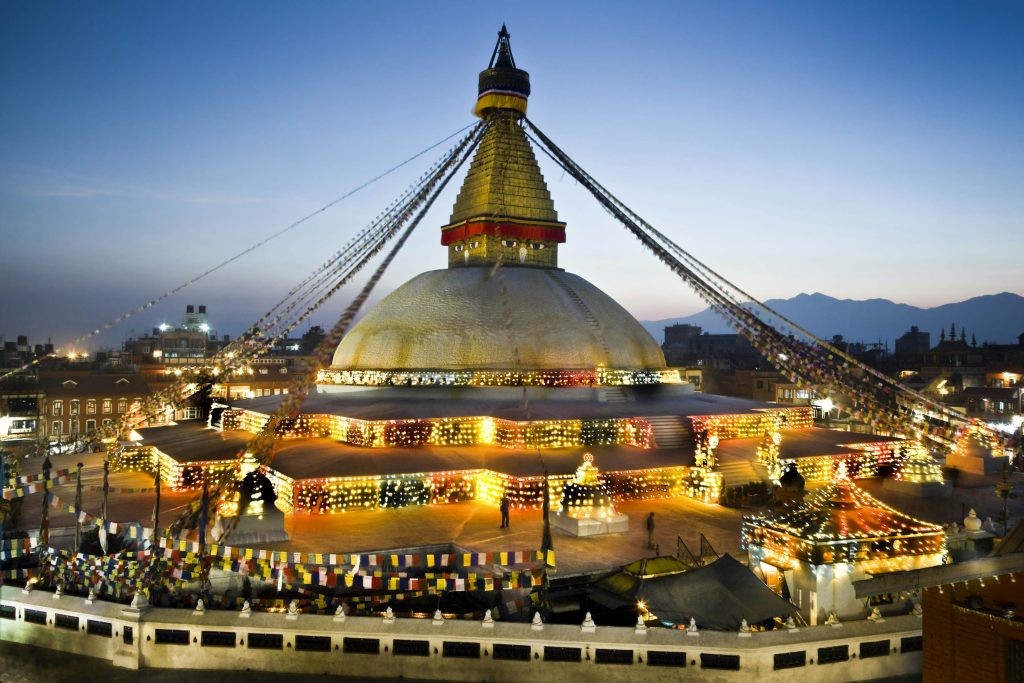
Buddha Stupa, also known as Boudhanath, Khasti Chaitya, and Khsa Chaitya, stands as both an architectural wonder and a spiritual icon in the heart of Kathmandu City, Nepal. Nestled approximately 11 kilometers northeast of the city center, this massive stupa features a mandala design, making it one of the largest spherical stupas in both Nepal and the world.
In 1979, Boudha Stupa earned recognition as a UNESCO World Heritage Site, which further solidified its global significance. Alongside Swayambhu, Boudhanath consistently draws numerous tourists and pilgrims, cementing its place as one of the most visited sites in the Kathmandu area. Originally, builders constructed stupas to house holy relics, and some claim that Boudhanath contains the relics of the past Buddha, Kashyapa. Others, however, believe it holds a piece of bone from the skeleton of Siddhartha Gautama, the historical Buddha.
Around the base of the stupa, 108 small images of the Dhyani Buddha Amitabha are set, with 108 being an auspicious number in Tibetan culture. Additionally, 147 niches house rings of prayer wheels, arranged in groups of four or five. As a testament to Nepal and Tibet’s enduring spiritual traditions and vibrant cultures, Boudha Stupa continues to inspire devotion and reverence.
While time may have brought changes to the surrounding landscape, the stupa remains a steadfast symbol of faith. Visitors can immerse themselves in the rich history, traditions, and spirituality that surround Boudhanath, ensuring a profound experience for all who walk its sacred grounds.
14. Thamel
As the tourist district of Kathmandu valley, Thamel bustles with activity late into the night. Located just a 10-minute walk from the center of Kathmandu City, it stands in stark contrast to the rest of the city. Thamel caters entirely to tourists with its numerous hotels, rows of restaurants and bars, bookshops, inviting souvenir stores, cyber cafes, and travel agencies. During the hippie era, many artists traveled to Nepal via the Hippie Trail and stayed in Thamel for weeks, solidifying its position as the epicenter of Kathmandu’s tourism industry. Today, Thamel remains the main tourist destination in the Kathmandu Valley, offering everything a tourist could need, including friends and travel companions.
Moreover, Thamel is excellent for shopping, offering a wide range of trekking and mountaineering gear, travel accessories, and souvenirs. Recognized as the most popular and vibrant tourist destination in Nepal, Thamel is situated in the city’s center and is known for its short lanes filled with an eclectic mix of shops, vendors, restaurants, and pubs. For over a century, this vibrant neighborhood has been at the heart of Kathmandu’s tourism industry and continues to be a must-visit location for travelers to Nepal.

Since the hippie era, when artists flocked to Nepal via the Hippie Trail and stayed in Thamel for extended periods, the area has remained a key tourist hub. Given its compact size, Thamel’s attractions are easily accessible by foot. However, visitors should prepare to navigate through a bustling crowd of people, bikes, and rickshaws, as the streets can become quite packed. For a comfortable visit, it’s best to wear sturdy shoes and dress appropriately for the weather.
In addition to walking, visitors can rent bicycles or motorcycles to explore the area more efficiently. While taxis and car rentals are available, they can be pricier compared to other modes of transportation. Thamel is also a shopper’s paradise, offering everything from traditional Nepalese handicrafts to clothing, gear, and souvenirs. Since bargaining is common, shoppers can engage with vendors and explore the many shops lining the vibrant streets.
15. Garden of Dreams
The Garden of Dreams, located in the heart of Kathmandu City, is a serene and beautifully restored neoclassical garden that offers a peaceful escape from the bustling city. Originally built in the 1920s by Field Marshal Kaiser Shumsher Rana, it is also known as the Kaiser Mahal Garden. The garden was inspired by European designs, reflecting a mix of Western and Eastern architectural styles, making it one of the most unique and charming spots in Kathmandu.
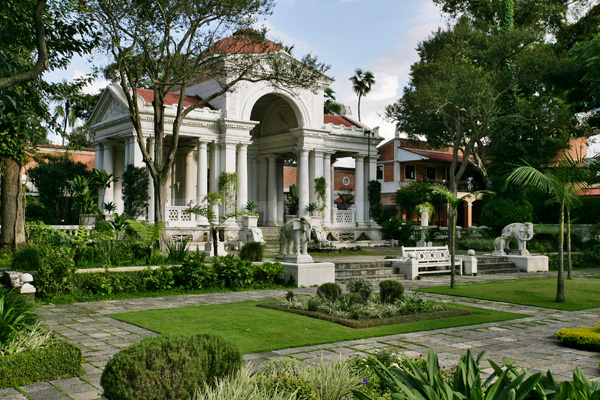
The garden was designed in the Edwardian style, featuring six impressive pavilions, each representing one of the six seasons of Nepal. These pavilions, along with pergolas, fountains, and lush greenery, create an atmosphere of tranquility and elegance. The garden was initially much larger, covering over 74,000 square feet, but over time, it fell into disrepair after Kaiser’s death. It wasn’t until the early 2000s, with support from the Austrian government and the Nepal Ministry of Education, that the Garden of Dreams underwent extensive restoration. The project carefully restored the original structures, water features, and landscaping, reviving the garden’s former glory.
The Garden of Dreams is one of Kathmandu City’s most popular tourist attractions, drawing visitors from around the world who seek a peaceful retreat amidst the city’s bustling streets. Its quiet pathways, beautiful water features, and lush greenery provide a perfect place to relax, read, or simply enjoy the beauty of nature. Locals and tourists alike come to the garden to escape the chaos of Kathmandu, finding solace in the garden’s peaceful ambiance.
The garden also has a café and restaurant where visitors can enjoy a meal or a cup of coffee while taking in the garden’s beauty.With its soothing atmosphere and elegant design, the Garden of Dreams is often considered a hidden gem in the city, ideal for leisurely walks, photography, and peaceful contemplation.
Conclusion
Kathmandu City is a unique blend of the ancient and modern, where centuries-old temples stand beside contemporary buildings. Its rich cultural history, combined with its role as a trekking gateway and cultural melting pot, makes it one of South Asia’s most fascinating cities to explore. Whether visitors come for spiritual enlightenment, historical exploration, or adventure, Kathmandu offers an unforgettable experience.
The scenic beauty of Kathmandu City is a captivating blend of natural landscapes and architectural marvels, making it a truly unique and mesmerizing destination. While it is the capital of Nepal and a bustling urban center, the city is surrounded by natural wonders and picturesque views that leave visitors in awe.
Kathmandu City FAQs
What is Kathmandu famous for?
kathmandu is famous for its religious monuments such as various temples, monasteries, and stupas adorn the city’s landscape, particularly the Pashupatinath Temple and the Changu Narayan which are famous for their stunning, intricate religious artworks.
Is Kathmandu good for tourists?
Yes, Kathmandu is good place for tourists. Kathmandu has also emerged as a gateway for trekkers and adventurers heading into the Himalayas, including the famed Mount Everest. Kathmandu City is a melting pot of cultures, where Hinduism and Buddhism coexist harmoniously. Festivals such Dashain, Tihar, and Indra Jatra bring the city to life with colorful processions, music, and rituals that attract both locals and tourists alike. Kathmandu is set in the Kathmandu Valley, encircled by lush green hills that provide a stunning backdrop to the city’s skyline.
What makes Kathmandu special?
Multitude of historical and religious sites scattered throughout the city, Kathmandu is a unique blend of the ancient and modern, where centuries-old temples stand beside contemporary buildings. Its rich cultural history, combined with its role as a trekking gateway and cultural melting pot, makes it one of South Asia’s most fascinating cities to explore.
What is good about Kathmandu?
Kathmandu’s weather, religious sites, Durbar squares, Monastries, cultural history, lush green hills etc..
What type of city is Kathmandu?
Kathmandu is a capital city of Nepal. It is the Metropolitan city with highest populatation.
What are the famous foods of kathmandu?
Famous foods of Kathmandu are momo, thukpa, selroti, juju dhau, chatamari and more.
What language is spoken in Kathmandu?
Nepali is spoken by 78% of the population either as first or second language and has official language status.
What is the other name of Kathmandu?
kantipur is the old name of Kathmandu.
Which is the richest place of Nepal?
Kathmandu City is the richest/ wealthiest place of Nepal.
Who built Kathmandu City?
King Gunkamadeva found the Kathmandu City.
Also Read: Pokhara City

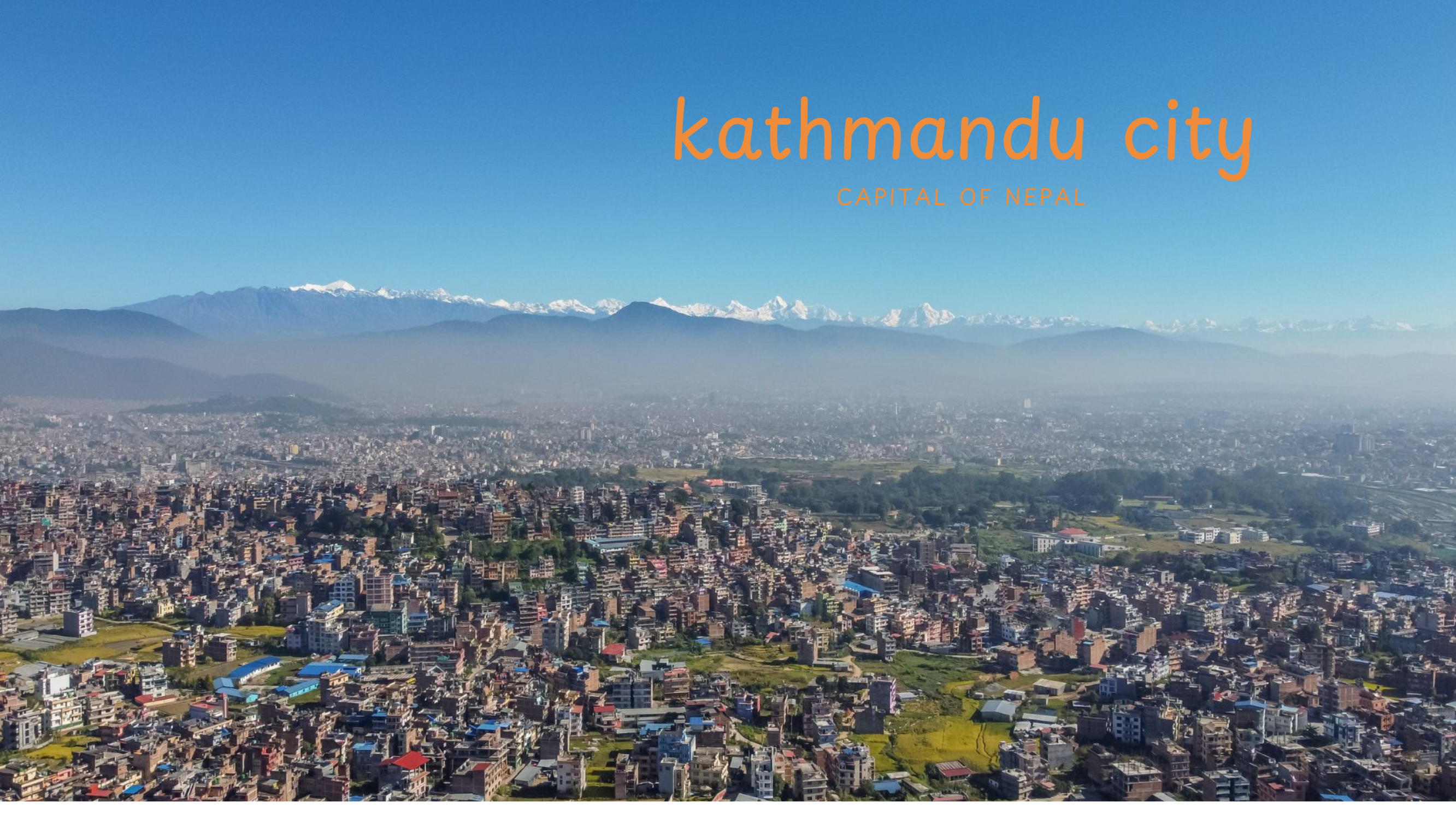
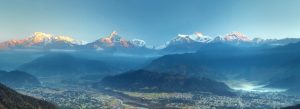
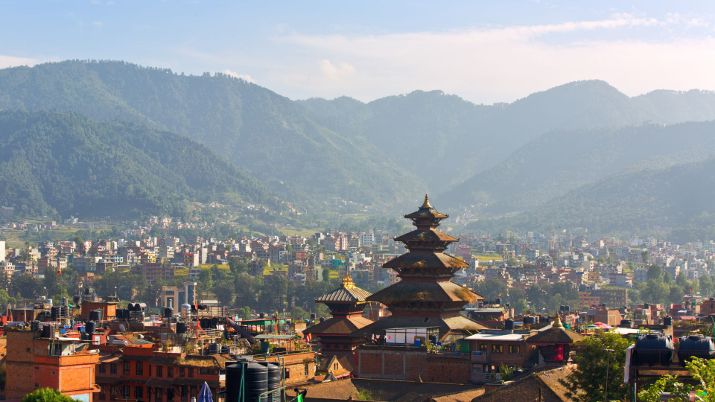
One thought on “Kathmandu City:15 Breathtaking Places”